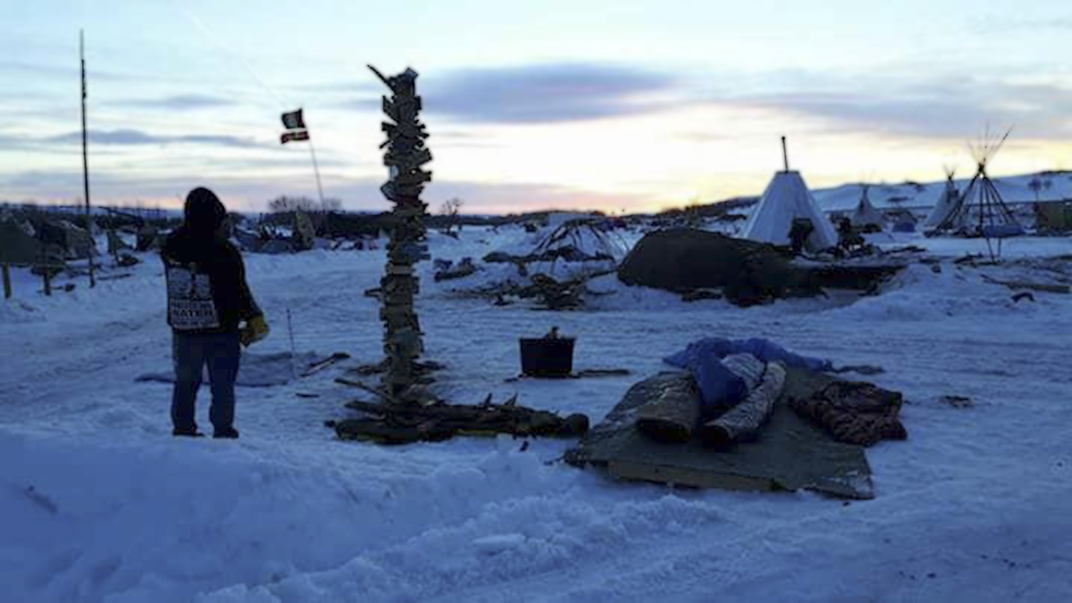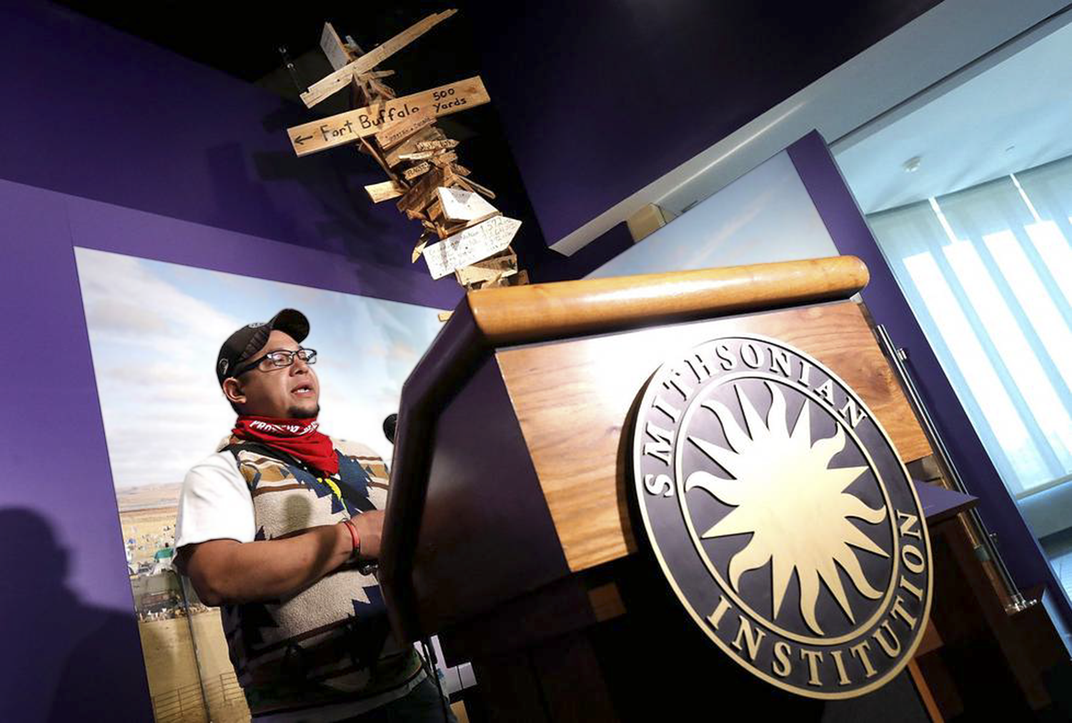NATIONAL MUSEUM OF THE AMERICAN INDIAN
Mile-marker from the Dakota Access Pipeline protests makes the point that U.S. treaty history is still being written
Signs nailed to a mile-marker at the DAPL protest show how far people came and from how many places to stand up for treaty rights and the right of Native Nations to be consulted as governments. Now the final section of the exhibition “Nation to Nation” at the National Museum of the American Indian, the mile-marker stands as a powerful symbol of the fact that American Indian treaties remain U.S. law, and that their stories are not finished. It also serves as a symbol of modern resistance.
:focal(329x498:330x499)/https://tf-cmsv2-smithsonianmag-media.s3.amazonaws.com/blogging/featured/John_Richard_Edwards_at_the_mile-marker_installation.png)
On Tuesday, October 24, the National Museum of the American Indian in Washington, D.C., added a mile-marker post from last year’s Dakota Access Pipeline (DAPL) protest to the exhibition Nation to Nation: Treaties Between the United States and American Indian Nations. Now the final section of the exhibition, the eleven-and a-half foot tall mile-marker, stands as a powerful symbol of the fact that American Indian treaties remain U.S. law, and that their stories are not finished.
The mile-marker post also serves as a symbol of modern resistance. More than 350 tribes came to rally opposition to the Dakota Access Pipeline. The Standing Rock Sioux maintain that the pipeline threatens their lands and water. Originally the pipeline was to cross the Missouri River above Bismarck, the state capital. But citizens deemed that route unsafe for the city’s water. As a result, the pipeline was redirected to cross the river above the drinking water source of the Standing Rock Indian Reservation, just south of the city.
The Dakota Access Pipeline protests began in the spring of 2016 after young tribal members organized a run to bring awareness to the issue. In addition to protecting the water, key issues for the Standing Rock Sioux include protecting treaty rights, protecting sacred sites, and exercising the tribe’s right to consultation with the United States government. Representatives from other tribes, along with celebrities and allies from around the world, joined the protest. Protesters called themselves water protectors and established three camps near the pipeline construction site on the Missouri River. A new rallying cry was born—Mni Waconi, Water Is Life.

While at the camps, visiting water protectors proudly displayed their tribal flags, protest signs, and other objects to show solidarity. Hickory Edwards (Onondaga), one of the water protectors, raised a mile-marker post in the Oceti Sakowin (Great Sioux Nation) camp, the largest of the three camps. Handmade signs quickly covered the post, showing the participants’ cities, states, tribal affiliations or countries, and how far they had traveled to join the protest. The mile-marker became a focal point within the camp, as well as a popular site to take selfies and photos of other water protectors.
On February 27, 2017, a day after the deadline to leave the reservation, the Oceti Sakowin camp was cleared. Edwards took the mile-marker post with him when he left, with the idea of donating it to the Smithsonian National Museum of the American Indian. Edwards and fellow protesters Konwenni Jacobs (Kahnawake Mohawk) and Bryanna Patinka delivered the mile-marker to the museum’s Cultural Resources Center in Maryland. In 2021, when Nation to Nation closes, the mile-marker will go off public display, but it will remain in the museum’s collections, where it will be cared for and where researchers, tribal representatives, and others will be able to see it upon request.

Nation to Nation focuses on the historic treaties made between the United States and American Indian nations. The U.S. Senate ratified more than 370 treaties with Indian nations before the treaty-making process was replaced by executive orders and acts of Congress. The mile-marker serves as a powerful reminder of the exhibition’s themes, and especially of the never-ending struggle American Indians face to preserve their treaty rights.
